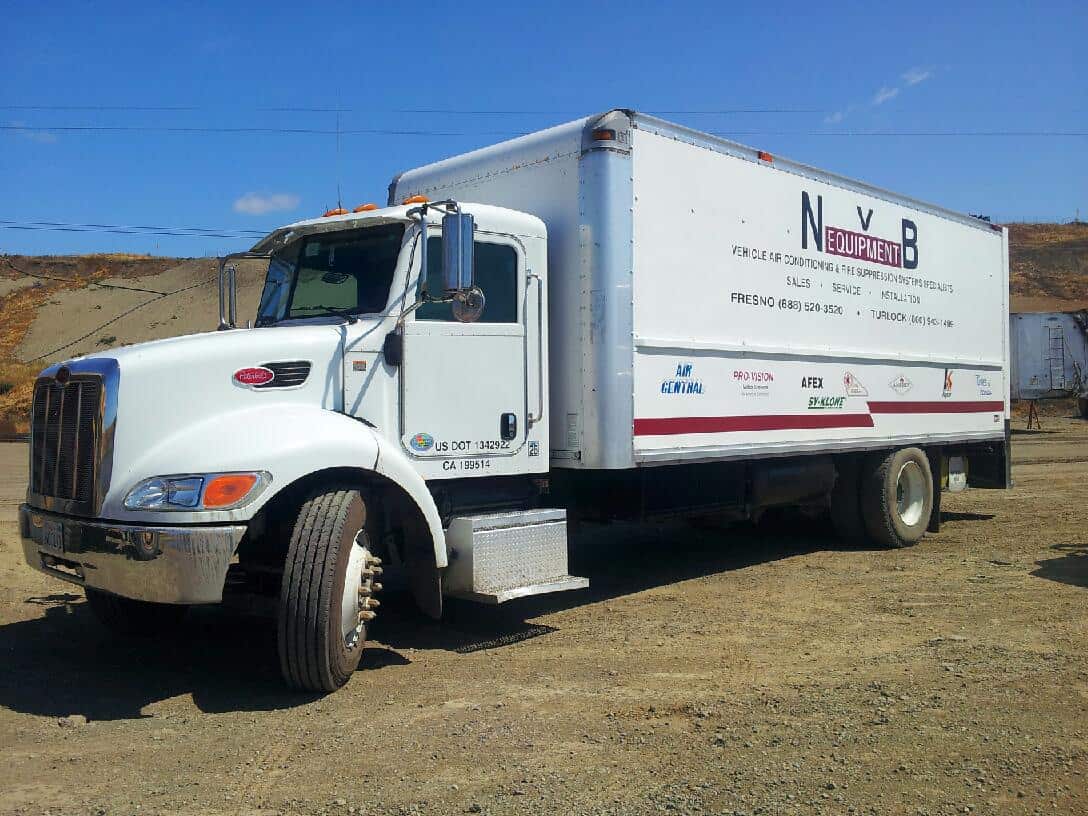A fleet for field work: servicing specialty equipment
By Stephen Petit, Siefkes/Petit Communications
In heavy-duty A/C work, the service vehicle is essentially a shop on wheels — it’s vital for reaching equipment that operates virtually around the clock or can never see the highway.
NVB Equipment in Fresno, Calif., has 16 trucks covering the entire state. On any given day, service men may be in the middle of an almond grove, on a dairy farm, or at a forestry job far off the grid.

Since most off-highway equipment isn’t licensed for the road, routine maintenance and repairs take place in the field. NVB’s service trucks are A/C shops on wheels.
More than 65% of the company’s revenue comes from field service.
“Each vehicle carries $30,000 to $45,000 worth of inventory and has all the tools for just about any job,” says NVB’s Mike Oddo. “Preventive maintenance, emergency service… We can do a system hose-up and charge for a new A/C unit installation directly from the back of the truck.”
Oddo offers these tips for keeping field service trucks productive and profitable:
- Big but not too big: NVB’s vehicles are medium-duty commercial trucks. Rated at 26,000 lbs. GVW, they’re big enough to handle tools and inventory but just below the threshold where the technician needs a CDL.
“A bigger truck gives you increased options with body size but it’s more involved in terms of licensing, maintenance, and operations,” says Oddo. “You have to balance size with added complexity and cost.”
- One truck, one technician: NVB assigns one technician to each truck. He’s responsible for all tools and inventory, and functions as his own service writer. “When you slip-seat, you have to keep the trucks absolutely uniform when it comes to organization and stocking levels,” Oddo says. “It’s really hard to do when you’re performing such a wide range of work. We’d rather make one person accountable and keep it simple.”
- Power and water on board: Powering welders, vacuum pumps, air compressors, recovery machines, floodlights, and other equipment in the field is a challenge in California where emissions from idling and APUs are tightly controlled.
NVB trucks are equipped with a generator but usually power everything through inverters and isolated deep-cycle batteries. Another key spec: water tanks and electric pumps. If the technician has to wash out an evaporator coil or a condenser, he can do so without an external water source.
“We get instructions such as: ‘Take the dirt road for 4 miles until you come to the big rock, then stay to the right,’” says Oddo. “It’s an adventure almost every time we get dispatched, and I guess that’s part of what makes specialty OE work interesting. You never know where you’re going next.”
If you’re a service professional and not a MACS member yet, you should be!
Become a member and receive a monthly technical newsletter with information like what you’ve just read in this blog post visit http://bit.ly/10zvMYg for more information.
You can E-mail us at macsworldwide@macsw.org .
To locate a Mobile Air Conditioning Society member repair shop in your area.
Click here to find out more about your car’s mobile A/C and engine cooling system.
Mobile A/C professionals should plan to attend MACS 2017 Training Event and Trade Show, February 15-18 at the Anaheim Marriott in Anaheim, CA.
Click here to see MACS current public training schedule.
The MACS website is located at www.macsw.org

Leave a Reply